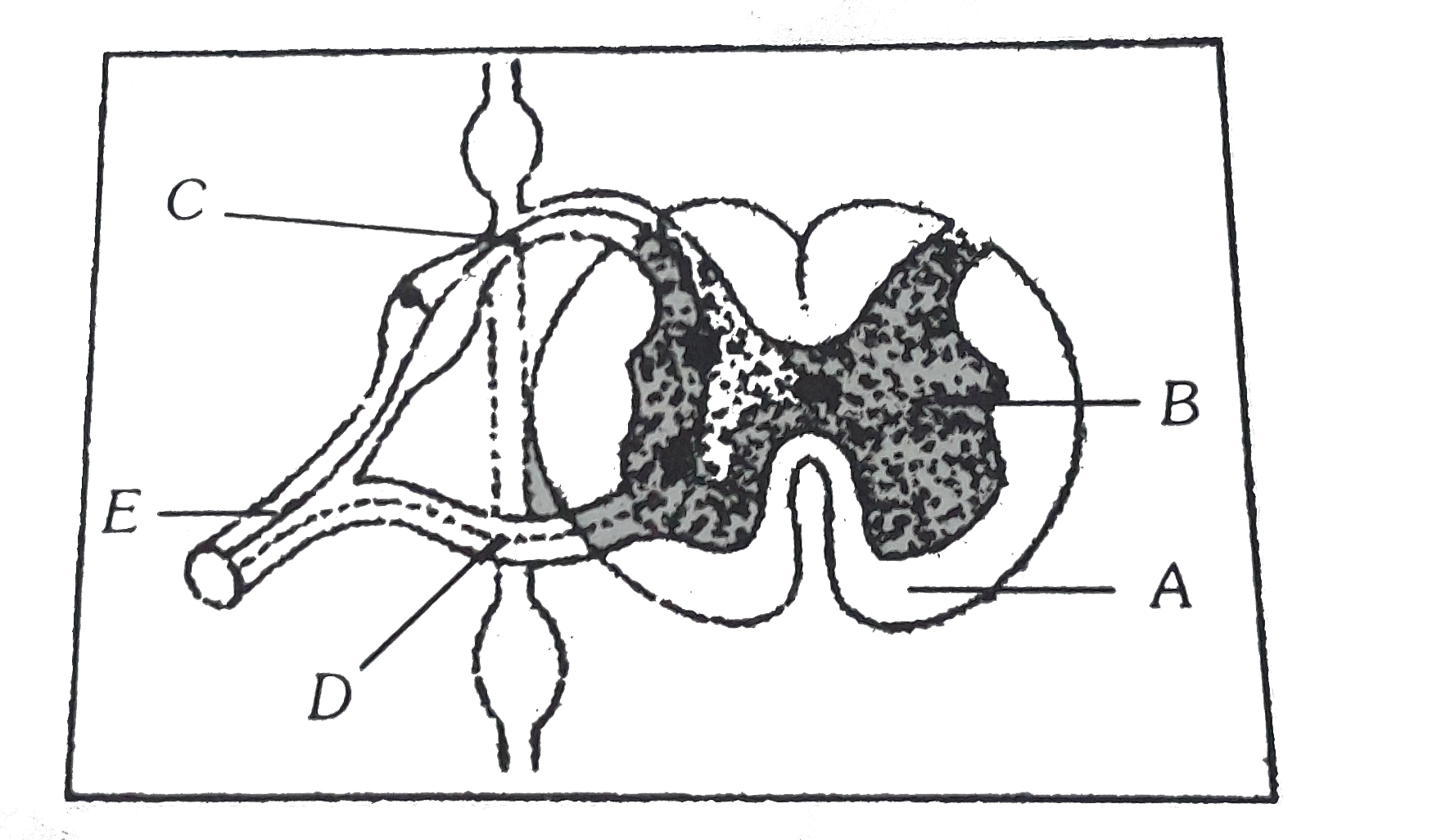In a cross section of the spinal cord A, B, C, D and E represent

A
A - white matter, B - grey matter, C - dorsal root, D - ventral root, E - spinal nerve
B
A - white matter, B - grey matter, C - ventral root, D - dorsal root, E - spinal nerve
C
A - grey matter, B - white matter, C - ventral root, D - dorsal root, E - spinal nerve
D
A - white matter, B - grey matter, C - spinal nerve, D - ventral root, E - dorsal root
Video Solution
Text Solution
The correct Answer is:A
|
Answer
Step by step video, text & image solution for In a cross section of the spinal cord A, B, C, D and E represent by Biology experts to help you in doubts & scoring excellent marks in Class 11 exams.
Updated on:21/07/2023Topper's Solved these Questions
- NEURAL CONTROL AND COORDINATIONBOOK - ERRORLESS CHAPTER - NEURAL CONTROL AND COORDINATIONEXERCISE - Assertion and Reason
17 Videos
- MORPHOLOGY OF FLOWERING PLANTSBOOK - ERRORLESS CHAPTER - MORPHOLOGY OF FLOWERING PLANTSEXERCISE - Morphology Of Flowering Plants
613 Videos
- PHOTOSYNTHESIS IN HIGHER PLANTSBOOK - ERRORLESS CHAPTER - PHOTOSYNTHESIS IN HIGHER PLANTSEXERCISE - Photosynthesis In Higher Plants
339 Videos
Similar Questions
Knowledge Check
End of spinal cord is
ACauda equinaBConus terminalisCFilum terminalisDFuniculusBrain and spinal cord are
AeffectorsBreceptorsCnervous organsDintermediary neuronsIn the diagram of the reproductive system of earthworm A, B, C, D and E represent:
 AA = Seminal vesicle, B = Spermathecae, C = Prostate gland, D = Ovary, E = Acessory glandBA = Seminal vesicle, B = Ovary, C = Acessory gland, D = Spermathecae, E = Prostate glandCA = Spermathecae, B = Seminal vesicle, C = Acessory gland, D = Ovary, E = Prostate glandDA = Spermathecae, B = Seminal vesicle, C = Ovary, D = Acessory gland, E= Prostate gland.
AA = Seminal vesicle, B = Spermathecae, C = Prostate gland, D = Ovary, E = Acessory glandBA = Seminal vesicle, B = Ovary, C = Acessory gland, D = Spermathecae, E = Prostate glandCA = Spermathecae, B = Seminal vesicle, C = Acessory gland, D = Ovary, E = Prostate glandDA = Spermathecae, B = Seminal vesicle, C = Ovary, D = Acessory gland, E= Prostate gland.
